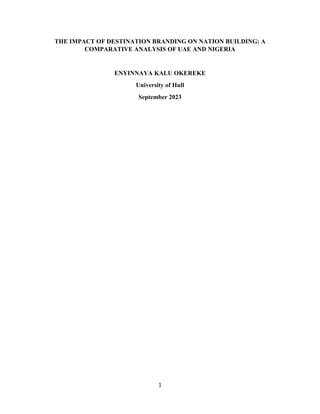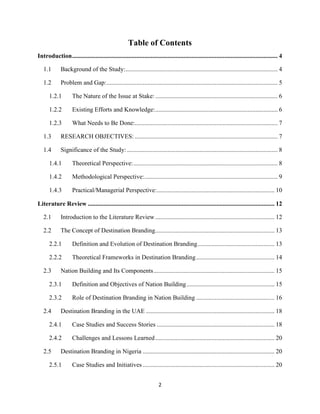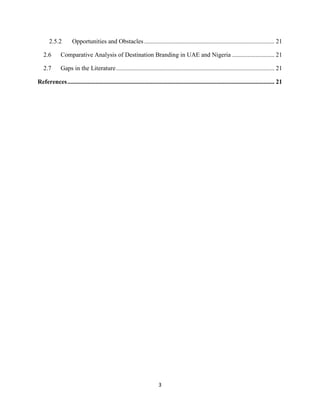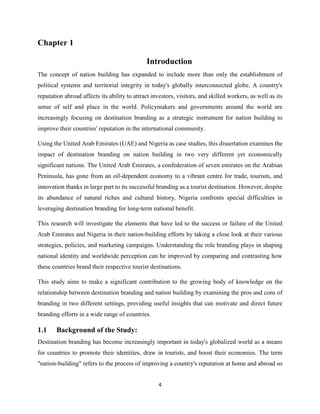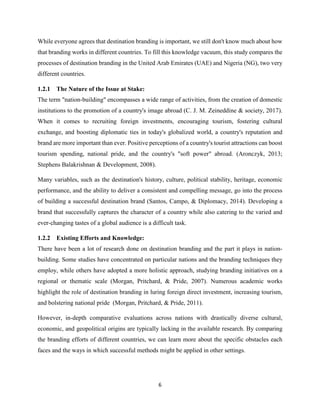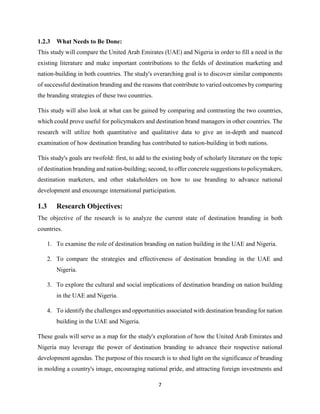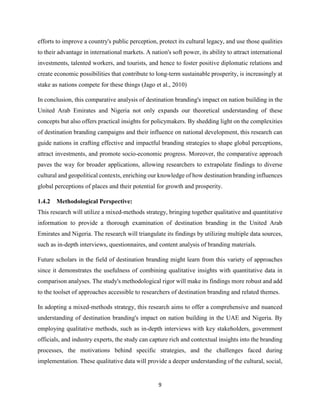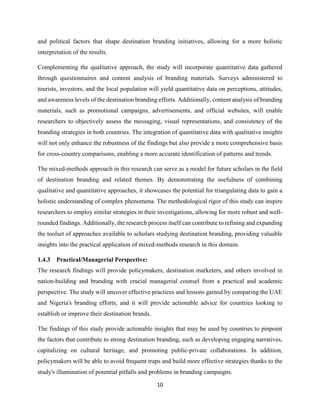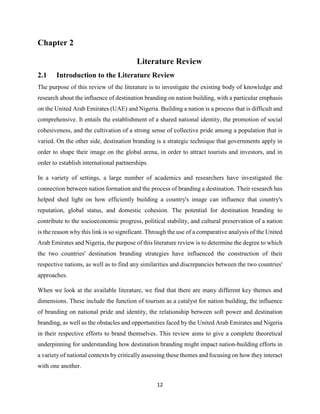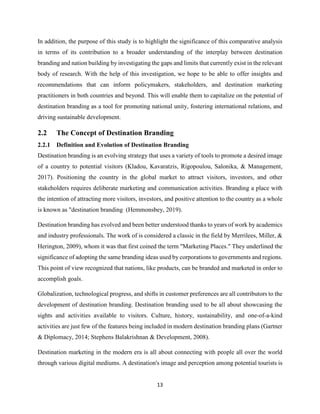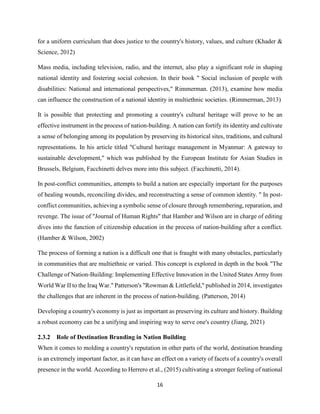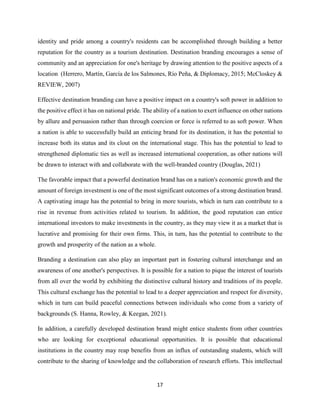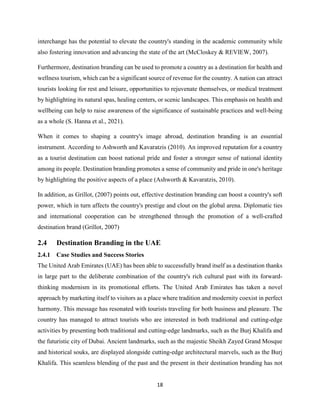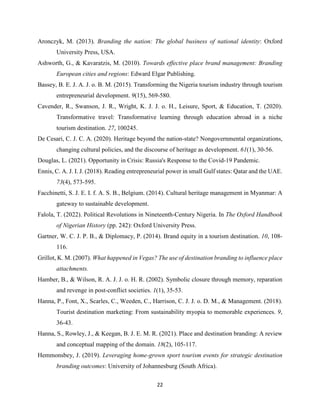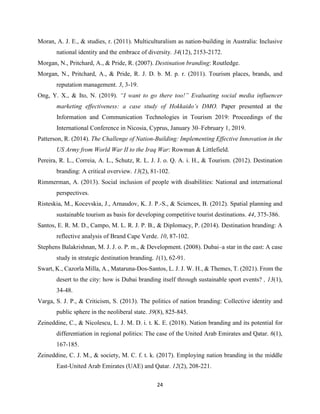This document provides an introduction and literature review for a study comparing the impact of destination branding on nation building efforts in the United Arab Emirates and Nigeria. The introduction outlines the background, problem statement, research objectives, and significance of the study. The study aims to examine how destination branding has contributed to nation building in the UAE and Nigeria by comparing their branding strategies, policies, initiatives and outcomes. The literature review covers key concepts around destination branding and nation building, and explores existing research on branding efforts in the UAE and Nigeria individually as well as comparative analyses.
